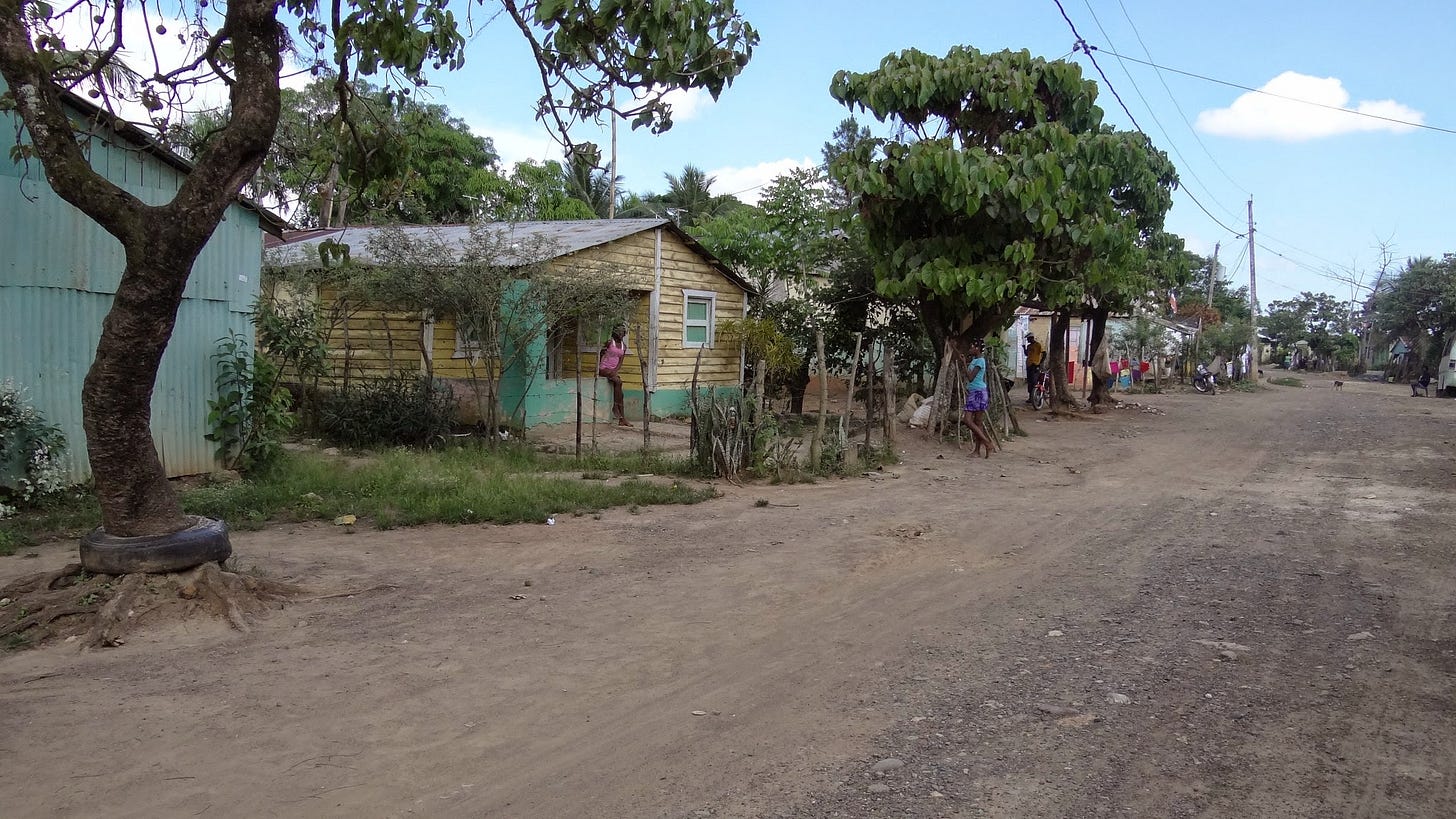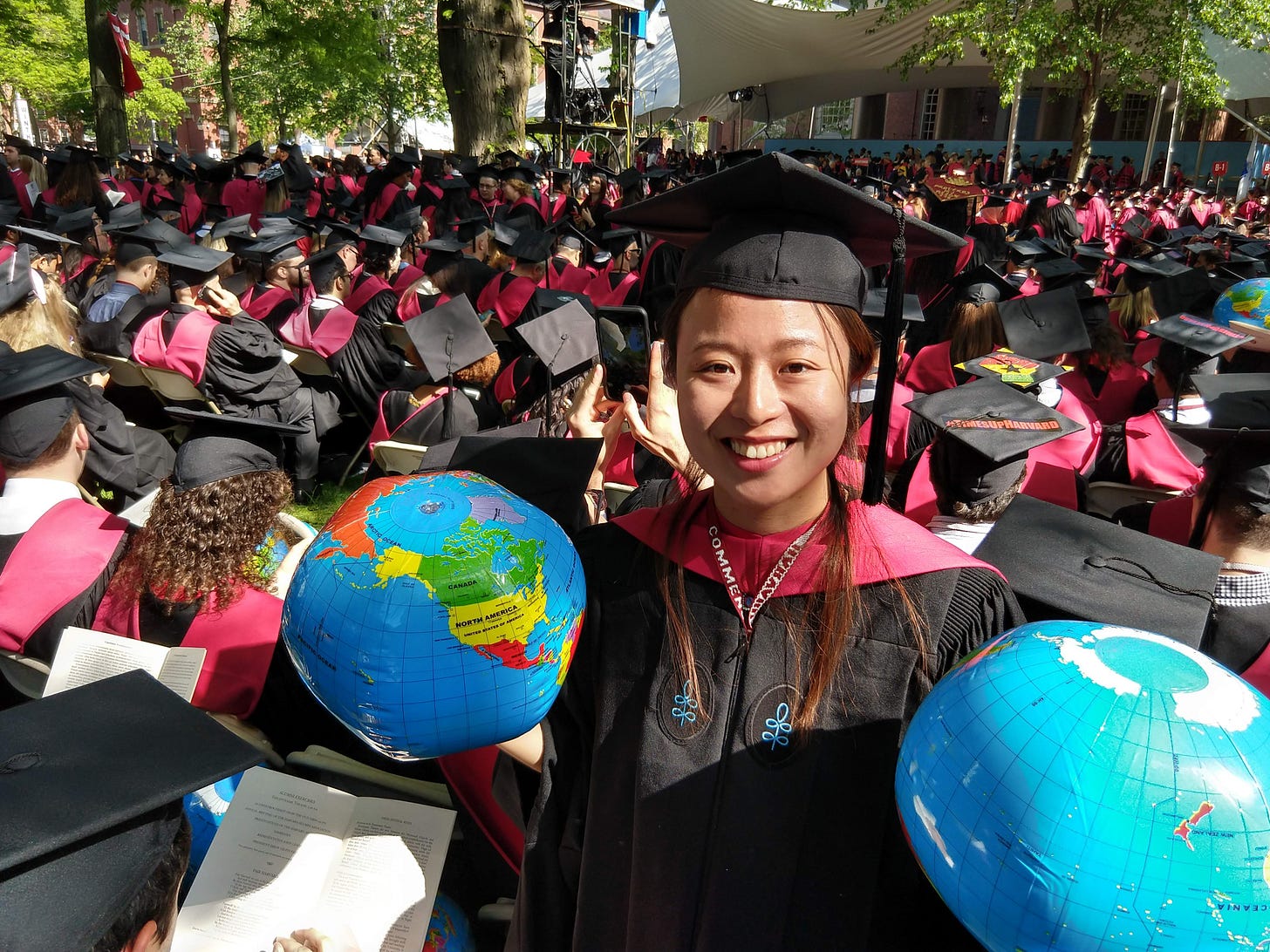How I Broke into Data Science Without a STEM Degree
How a passion for financial inclusion shaped my journey from microfinance to machine learning
I didn’t set out to be a data scientist.
I studied finance in college with my eyes set on Wall Street—until a study abroad program in the Dominican Republic changed everything.
There, I learned about microfinance firsthand. I sat in tiny storefronts and bustling markets, listening to entrepreneurs who had taken out $20 loans to grow their businesses:
A woman selling homemade soap ordered plastic bottles to scale her sales.
A handyman bought a power drill to take on bigger projects.
A tailor purchased fabric to fill more orders.
I saw how $20 - literally the price of a lunch in most first-world countries - could transform businesses and lives.
This experience was deeply moving and ignited my mission to expand financial access to those left out of the traditional system. Over the next decade, I dedicated my career to unlocking financial access for the unbanked.
Along the way, I discovered machine learning. I saw how it could make financial decisions fairer, faster, and more inclusive.
My path into data science wasn’t linear nor was it easy, but every twist and turn makes sense in hindsight. They took me on a journey across the globe, solving meaningful problems at scale, and helping one business at a time.
My passion for financial inclusion led me to:
Join a FinTech in Peru using psychometric credit scoring to assess entrepreneurs without credit histories.
Pursue a Master in Public Policy at Harvard, refining my skills in data-driven policy and understanding of global financial systems.
Move to California to work at Silicon Valley startups, progressing from risk analyst to data scientist to machine learning engineering manager.
But my atypical journey into data science has often left me feeling imposter syndrome. I came to realize that the field often feels elitist, as if you need the perfect technical background and credentials to get hired.
I can tell you for a fact that’s simply not true.
What truly matters isn’t your degree or your title - it’s your ability to learn, build, and communicate.
If you’re thinking about breaking into data science, here’s what I’ve learned matters most:
Courage - Put yourself out there, make mistakes, and learn from them.
Motivation - The technical side of data science is hard, but with persistence and effort, it’s doable.
Communication - Even the best data scientists don’t succeed alone. Good communication skills and collaboration are key.
I’m here to share my journey and show you that breaking into data science is possible if you take the right approach.
Entering the Silicon Valley Startup Scene
In 2016, I joined my first Silicon Valley-backed FinTech as a risk analyst.
We were launching in Mexico, and I was part of a small team that grew the lending portfolio from scratch to millions of customers in just two years.
It was exhilarating.
I became an expert in credit and fraud risk, fine-tuning credit strategies while trying to keep fraud and default rates under control.
But what fascinated me most was how machine learning (ML) transformed decision-making. I saw how it automated decisions at scale, allowing us to expand access to more customers while improving business metrics.
The more I worked with ML models, the more I wanted to go deeper:
Mastering how they worked,
Building models myself, and
Applying insights from my field experience.
I became obsessed with data science.
The Leap into Data Science
At that point, I had two choices:
Stay in my comfort zone, working as a risk analyst.
Make the leap into data science, despite not having a formal background in it.
I took the risk.
I didn’t want to just apply credit strategies; I wanted to develop models that drove smarter decisions and unlocked new opportunities for those shut out of traditional finance.
For the next nine months, I worked tirelessly to learn data science.
I could have gone back to school, but I already had a master’s degree and didn’t want to invest in another one. Instead, I:
Watched YouTube lectures and followed along with tutorials.
Sought mentorship from colleagues and a data science coach.
Studied Kaggle notebooks and built models with public datasets.
It was a process of trial and error, relentless learning, and growing my support network.
On top of my responsibilities as an analyst, I took on data science projects to prove my skills. Over time, I built up enough credibility to transition into a full-time data scientist.
Growing as a Data Scientist
My goal has always been to create real, lasting change, and I found that data science is a high-leverage tool to advance financial inclusion-a mission that’s deeply meaningful to me.
This pursuit has led me to incredible opportunities, including:
Developing machine learning models that have extended US$900M+ in credit to entrepreneurs worldwide.
Leading a team of ML Engineers, managing machine learning work for lending portfolios across nine countries.
Integrating machine learning into product development, creating personalized credit products that meet the unique needs of underserved populations.
Through every challenge and opportunity, the driving force behind my career decisions has always been:
Impact.
I’ve always chased impact.
I realized that data science doesn’t just enable impact- it multiplies it, creating scalable solutions that provide opportunities previously unavailable to deserving individuals.
Advice for Aspiring Data Scientists
I was drawn to data science because of the transformative impact it can have in advancing meaningful change. I genuinely enjoy the work, and there are many other reasons why data science is so appealing.
If you’re trying to break into data science, here’s my biggest piece of advice:
Start building.
You don’t need a PhD or STEM degree. Degrees are just a signaling tool; real-world experience is what counts.
A strong portfolio is just as valuable as formal credentials. If you don’t have experience (yet), demonstrate your skills through projects.
Showcase your skills. I started writing on Medium five years ago, and it sharpened my ability to explain technical concepts. As you build out your portfolio, showcase your communication skills through writing blog posts or creating videos.
I learned by doing, and now I want to help others do the same.
The field is evolving so quickly, especially with the rise of LLMs over the past two years. I’m learning through projects and continuously building out my portfolio.
That’s why I started this Substack, where I share career advice from my experience and ideas for weekend AI projects. My goal is to build a community and help others create portfolio-worthy projects to break into AI and data science.
Final Thoughts
Data science and AI can seem intimidating, but the barriers to entry aren’t as rigid as they may seem.
My story proves that you don’t need the perfect technical background to get started.
What you do need are:
A mission that excites you (for me, it was financial inclusion).
Persistence to keep learning and growing your skills.
Willingness to build, share, and showcase your work.
If you’re serious about transitioning, start today.
Build something. Write or talk about it. Share your progress.
If I can do it, so can you!
Having made this transition myself, I’m passionate about helping others do the same.
How can I help you on your journey into data science? Share in the comments below!
For more on my transition story, watch this podcast interview.
Read about how Spanish helped shape my career into data science here.








What an inspiring journey, Claudia !!! Yes, Upskilling regularly on what you love doing is much needed than a degree!! Thanks for sharing!
What a great story !! Thanks for sharing it, really enjoyed reading this personal experience 🙏